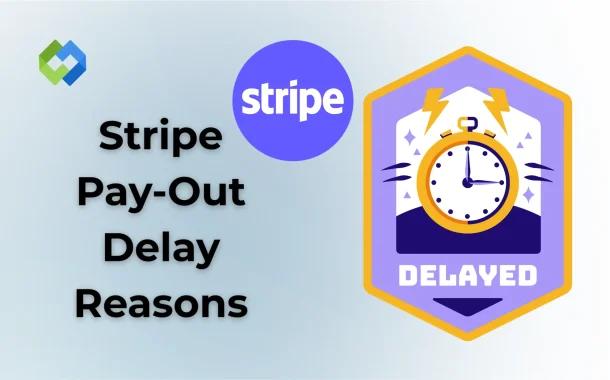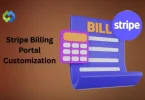Getting payouts on time is important for managing your cash flow. You may need that money to pay suppliers, staff, or cover daily expenses. If there’s a delay, it can hurt your business planning and slow things down. For small businesses or new sellers, timely payouts help build trust and keep operations smooth.
Table of Contents
Table of Contents
How Stripe Processes Payouts
Stripe processes payouts by first collecting payments from your customers and holding them in your Stripe balance. This balance includes money from credit cards, bank transfers, or other payment methods. After a short holding period, Stripe automatically sends that money to your connected bank account. This transfer is called a payout.
The time it takes to receive a payout depends on several things. These include your country, bank, and how long you have been using Stripe. For new accounts, Stripe often holds the first payout for seven to fourteen days to complete initial verification checks. After that, payouts usually follow a regular schedule such as daily, weekly, or monthly.
By default, Stripe uses automatic payouts. This means you do not need to request transfers manually as they are sent on schedule. You can also choose manual payouts if you prefer more control over when your money is sent.
Top Reasons for Payout Delays
1. Incomplete Account Verification
Stripe requires all users to verify their identity and business information. If your documents are missing, unclear, or under review, payouts can be delayed. This usually affects new users or those who recently made changes to their account. Until everything is approved, Stripe may hold your funds.
2. Compliance and Legal Checks
Stripe follows banking rules in every country it operates. If your account activity triggers a compliance review, payouts may be paused. This may happen if there’s a mismatch in your details, your business is in a restricted category, or there are sudden changes in transactions. Stripe needs to stay legally safe.
3. Fraud and Risk Reviews
Stripe uses systems to check for fraud. If your account gets a high number of refunds, chargebacks, or large unexpected payments, it may be flagged. Stripe may stop payouts until the risk is reviewed. This protects both you and your customers from possible fraud or abuse.
4. Technical or System Delays
Sometimes Stripe systems may slow down due to technical updates or internal errors. These delays are rare but can affect many users at once. It can also happen during times of high traffic or system maintenance. In most cases, the issue resolves on its own after a short wait.
5. Bank Account Problems
If your connected bank account is incorrect, inactive, or closed, Stripe won’t be able to send your money. This causes delays or failed payouts. It’s important to check that your bank details are always correct and updated in your Stripe dashboard.
6. Currency Conversion and Regional Factors
When you receive payouts in a different currency or country, extra steps are involved. Your bank may take longer to process international wires. Currency conversion may also take more time depending on exchange rates or regional banking rules. These delays are outside Stripe’s direct control.
First-Time Transfers and Verification Holds
When you receive your first payout from Stripe, it usually takes longer than usual. This is because Stripe runs extra checks to review your account, verify your identity, and confirm your business details. The first payout often takes seven to fourteen days. This delay is normal and only happens once, unless there are further issues with your documents or activity.
Stripe may also place a verification hold if your submitted information is incomplete or doesn’t match official records. You might be asked to upload a government ID, business license, or bank statement. If there’s a mismatch or missing detail, payouts will remain on hold until everything is reviewed. Once your account is verified, future payouts are usually much faster and follow your set schedule.
Bank Processing and Regional Delays
Bank processing delays are common even after Stripe sends your payout. Once the money leaves Stripe, it goes through your bank’s internal systems. Most banks take two to five business days to post the funds to your account. If the payout falls near a weekend or holiday, it can take even longer. This happens often and is not something Stripe can speed up.
Each bank has its own rules and cut-off times. If Stripe sends the payout after a bank’s daily cut-off, it may not begin processing until the next business day. That’s why timing matters. Even though Stripe processes on time, your bank might still take an extra day or two.
Regional banking systems also play a role. Some countries have slower clearing systems or require more checks. If you’re receiving money in a different currency or through international transfer, delays are more likely. In such cases, the payout can take several extra days.
Steps to Fix or Prevent Delay Issues
Keep Your Account Information Updated
Make sure all your personal, business, and bank details are correct in your Stripe dashboard. Incomplete or incorrect information is a common cause of payout delays. Submit any required documents as soon as possible to avoid long review periods.
Check the Payout Status in Your Dashboard
If a payout is delayed, go to your Stripe dashboard and check the status. Stripe often provides a reason for the delay or lists the next step. Look for any alerts or document requests and respond quickly.
Contact Stripe Support if Needed
If you don’t understand the delay or it’s taking too long, contact Stripe support. They can guide you through what’s wrong and help resolve the issue faster.
Avoid High-Risk Activity on Your Account
Try to keep your transactions stable. Avoid sudden large payments, high refund rates, or anything that might flag your account for a review. Following Stripe’s terms helps keep your payouts consistent and on time.
Conclusion
Stripe payout delays can happen for many reasons. Most delays are due to verification checks, account issues, or slow bank processing. First-time payouts and regional rules can also cause extra wait time. It’s important to know how Stripe works so you don’t panic when a payout takes longer than expected.
To avoid delays, keep your account info updated and respond quickly to any requests from Stripe. Track your payout status in the dashboard and stay within Stripe’s rules. If there’s a problem, contact support. A little care can help keep your payouts smooth and on time.














